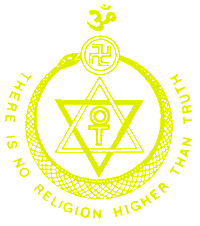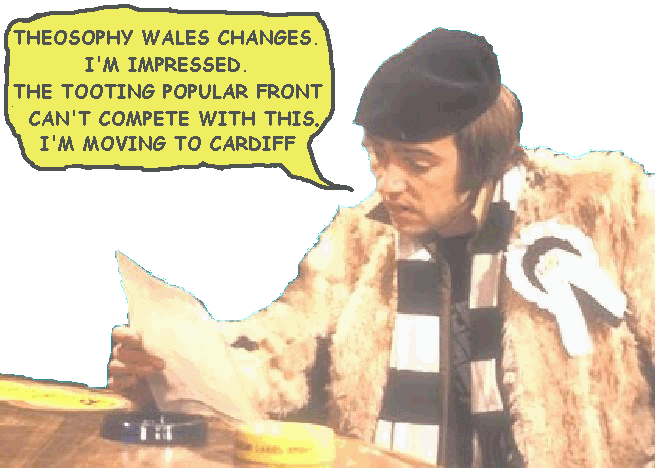HORNET
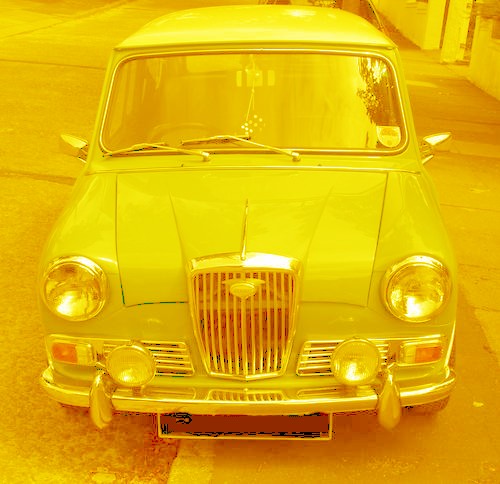
The
Wolseley Hornet 1960s model
An
upmarket version of the Mini
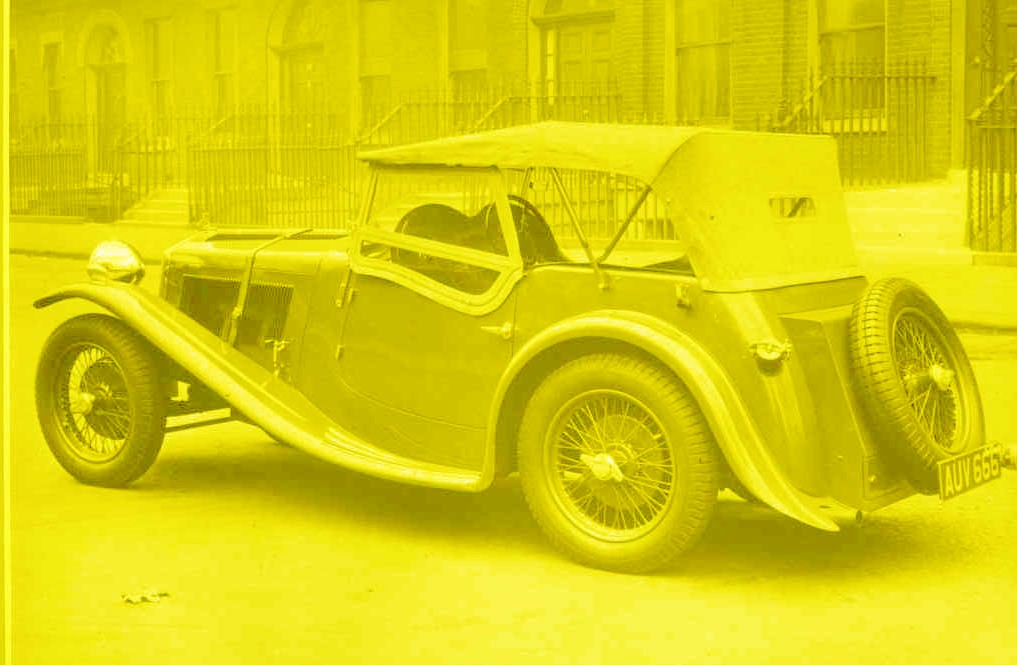
A
1930s Wolseley Hornet sports car
The
bodywork for these was made to order by a coachbuilder
of
the customer’s choice and there were many variations of this car.
The
series ran from 1930 to 1935
The Wolseley Hornet both in its 1930s sports
car
incarnation, and its 1960s posh mini version,
has
very little (in fact nothing) to do with
Theosophy
but we have found that Theosophists and new
enquirers do like pictures of classic cars
and we get a lot of positive feedback.
You can find Theosophy Wales groups
in
Bangor, Cardiff, Conwy & Swansea
Theosophy Wales has no controlling
body
and is made up of independent groups
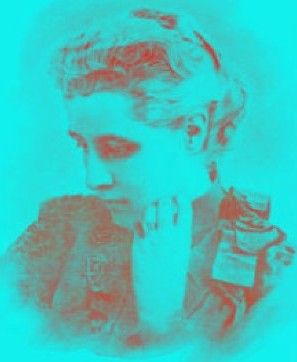
________________________
The
Ancient Wisdom
by
Annie
Besant
Kamaloka
KÂMALOKA,
literally the place or habitat of desire, is, as has already been intimated, a
part of the astral plane, not divided from it as a distinct locality, but
separated off by the conditions of consciousness of the entities belonging to
it. (The Hindus call this state Pretaloka, the habitat of Pretas. A Preta is a
human being who has lost his physical body, but is still encumbered
with the
vesture of his animal nature. He cannot carry this on with him, and until it is
disintegrated he is kept imprisoned by it.)
These are
human beings who have lost their physical bodies by the stroke of death, and
have to undergo certain purifying changes before they can pass on to the happy and
peaceful life which belongs to the man proper, to the human soul.
(The soul is
the human intellect, the link between the Divine Spirit in man and his lower
personality. It is the Ego, the individual, the " I ", which develops
by evolution. In Theosophical parlance, it is Manas, the Thinker. The mind is
the energy of
this, working within the limitations of the physical brain, or the astral and
mental bodies).
This region
represents and includes the conditions described as existing in the various
hells, purgatories, and intermediate states, one or other of which is alleged
by all the great religions to be the temporary dwelling-place of man after he
leaves the body and before he reaches "heaven." It does not include
any
place of
eternal torture, the endless hell still believed in by some narrow religionists
being only a nightmare dream of ignorance, hate and fear. But it does include
conditions of suffering, temporary and purificatory in their nature, the
working out of causes set going in his earth-life by the man who experiences
them. These are as natural and inevitable as any effects caused in this world
by wrongdoing, for we live in a world of law and every seed must grow up after
its own kind. Death makes no sort of difference in a man’s moral and mental
nature, and the change of state caused by passing from one world to another
takes away his physical body, but leaves the man as he was.
The Kâmalokic
condition is found on each subdivision of the astral plane, so that we may
speak of it as having seven regions, calling them the first, second, third, up
to the seventh, beginning from the lowest and counting upwards. (Often these
regions are reckoned the other way, taking the first as the highest and the
seventh as the lowest. It does not matter from which end we count ; and I am
reckoning upwards to keep them in accord with the planes and principles.).
We have
already seen that materials from each subdivision of the astral plane enter
into the composition of the astral body, and it is a peculiar rearrangement of
these materials, to be explained in a moment, which separates the people
dwelling in one region from those dwelling in another, although those in the
same region are able to intercommunicate. The regions, being each a subdivision
of the astral plane, differ in density, and the density of the external form of
the Kâmalokic entity determines the region to which he is limited ; these
differences of matter are the barriers that prevent passage from one region to
another ; the people dwelling in one can no more come into touch with people
dwelling in another than a deep-sea fish can hold a conversation with an eagle
– the medium necessary to the life of the one would be destructive to the life
of the other.
When the
physical body is struck down by death, the etheric body, carrying Prâna with it
and accompanied by the remaining principles – that is, the whole man, except
the dense body – withdraws from the "tabernacle of flesh," as the
outer body is appropriately called. All the outgoing life-energies draw
themselves inwards, and are "gathered up by Prâna," their departure
being manifested by the dullness that creeps over the physical organs of the
senses.
They are
there, uninjured, physically complete, ready to act as they have always been ;
but the "inner Ruler," is going, he who through them saw, heard,
felt, smelt, tasted, and by themselves they are mere aggregations of matter,
living indeed but without power of perceptive action. Slowly the lord of the
body draws himself away, enwrapped in the violet-grey etheric body, and
absorbed in the contemplation of the panorama of his past life, which in the
death hour rolls
before him,
complete in every detail.
In that
life-picture are all the events of his life, small and great ; he sees his
ambitions with their success or frustration, his efforts, his triumphs, his
failures, his loves, his hatreds ; the predominant tendency of the whole comes
clearly out, the ruling thought of the life asserts itself, and stamps itself
deeply into the soul, marking the region in which the chief part of his
post-mortem existence will be spent.
Solemn the
moment when the man stands face to face with his life, and from the
lips of his
past hears the presage of his future. For a brief space he sees himself as he
is, recognises the purpose of life, knows that the Law is strong and just and
good. Then the magnetic tie breaks between the dense and etheric bodies, the
comrades of a lifetime are disjoined, and – save in exceptional cases – the man
sinks into peaceful unconsciousness.
Quietness and
devotion should mark the conduct of all who are gathered round a dying body, in
order that a solemn silence may leave uninterrupted this review of the past by
the departing man. Clamorous weeping, loud lamentations, can but jar and
disturb the concentrated attention of the soul, and to break with the
grief of a
personal loss into the stillness which aids and soothes him, is at once selfish
and impertinent. Religion has wisely commanded prayers for the dying, for these
preserve calm and stimulate unselfish aspirations directed to his helping, and
these, like all loving thoughts, protect and shield.
Some hours
after death – generally not more than thirty-six, it is said – the man draws
himself out of the etheric body, leaving it in turn as a senseless corpse, and
the latter, remaining near its dense counterpart, shares its fate.
If the dense
body be buried, the etheric double floats over the grave, slowly
disintegrating, and the unpleasant feelings many experience in a churchyard are
largely due to the presence of these decaying etheric corpses. If the body is
burned, the etheric double breaks up quickly, having lost its nidus, its
physical centre of attraction, and this is one among many reasons why cremation
is preferable to burial, as a way of disposing of corpses.
The
withdrawal of the man from the etheric double is accompanied by the withdrawal
from it of Prâna, which thereupon returns to the great reservoir of life
universal, while the man, ready now to pass into Kâmaloka, undergoes a
rearrangement
of his astral body, fitting it for submission to the purificatory changes which
are necessary for the freeing of the man himself. (These changes result in the
formation of what is called by Hindus the Yâtanâ, or the suffering body, or in
the case of very wicked men, in whose astral bodies there is a
preponderance
of the coarser matter, the Dhruvam, or strong body).
During earth
life the various kinds of astral matter intermingle in the formation of the body,
as do the solids, liquids, gases, and ethers in the physical. The change in the
arrangement of the astral body after death consists in the separation of these
materials, according to their respective densities, into a series of concentric
shells – the finest within, the densest without –
each shell
being made of the materials drawn from one subdivision only of the astral
plane. The astral body thus becomes a set of seven superimposed layers, or a
seven-shelled encasement of astral matter, in which the man may not inaptly
be said to be
imprisoned, as only the breaking of these can set him free. Now will be seen
the immense importance of the purification of the astral body during
earth-life; the man is retained in each subdivision of Kâmaloka so long as the
shell of matter pertaining to that subdivision is not sufficiently
disintegrated
to allow of his escape into the next.
Moreover, the
extent to which his consciousness has worked in each kind of matter determines
whether he will be awake and conscious in any given region, or will pass though
it in unconsciousness, "wrapped" in rosy dreams," and merely
detained during the time necessary for the process of mechanical
disintegration.
A spiritually
advanced man, who has so purified his astral body that its constituents are
drawn only from the finest grade of each division of astral matter, merely
passes through Kâmaloka without delay, the astral body disintegrating with
extreme swiftness, and he goes on to whatever may be his bourne, according to
the point he has reached in evolution. A less developed man, but one whose life
has been pure and temperate and who has sat loosely on the things of the earth,
will wing a less rapid flight through Kâmaloka, but will dream peacefully,
unconscious of his surroundings, as his mental body
disentangles
itself from the astral shells, one after the other, to awaken only when he
reaches the heavenly places.
Others, less
developed still, will awaken after passing out of the lower regions, becoming
conscious in the division which is connected with the active working of the
consciousness during the earth-life, for this will be aroused on receiving
familiar impacts, although these be received now directly through the
astral body,
without the help of the physical. Those who have lived in the animal passions
will awake in their appropriate region, each man literally going "to his
own place."
The case of
men struck suddenly out of physical life by accident, suicide, murder, or
sudden death in any form, differs from those of persons who pass away by
failure of the life-energies through disease or old age. If they are pure and
spiritually minded they are specially guarded, and sleep out happily the term
of their natural life. But in other cases they remain conscious – often entangled
in the final scene of earth-life for a time, and unaware that they have lost
the physical body – held in whatever region they are related to by the
outermost layer of the astral body: their normal Kâmalokic life does not begin
until the natural web of earth-life is out-spun, and they are vividly conscious
of both
their astral
and physical surroundings.
One man who
had committed an assassination and had been executed for his crime was said, by
one of H.P.Blavatsky’s Teachers, to be living through the scenes of the murder
and the subsequent events over and over again in Kâmaloka, ever repeating his
diabolical act and going through the terrors of his arrest and execution.
A suicide
will repeat automatically the feelings of despair and fear which preceded his
self-murder, and go through the act and the death-struggle time after time with
ghastly persistence. A woman who perished in the flames in a wild condition of
terror and with frantic efforts to escape, created such a whirls of passions
that, five days afterwards, she was still struggling
desperately,
fancying herself still in the fire and wildly repulsing all efforts to soothe
her: while another woman who, with her baby on her breast, went down beneath
the whirl of waters in a raging storm, with her heart calm and full of love,
slept peacefully on the other side of death, dreaming of husband and
children in
happy lifelike visions.
In more
ordinary cases, death by accident is still a disadvantage, brought on a person
by some serious fault, (Not necessarily a fault committed in the present life.
The law of cause and effect will be explained in Chapter IX,
"Karma"), for the possession of full consciousness in the lower
Kâmalokic regions, which are
closely
related to the earth, is attended by many inconveniences and perils. The man is
full of all the plans and interests that made up his life, and is conscious of
the presence of people and things connected with them.
He is almost
irresistibly impelled by his longings to try and influence the affairs to which
his passions and feelings still cling, and is bound to the earth while he has
lost all his accustomed organs of activity ; his only hope of peace lies in
resolutely turning away from earth and fixing his mind on higher
things, but
comparatively few are strong enough to make this effort, even with the help
always offered them by workers on the astral plane, whose sphere of duty lies
in helping and guiding those who have left his world. (These workers are
disciples of some of the great Teachers who guide and help humanity, and
they are
employed in this special duty of succouring souls in need of such assistance.)
Too often
such sufferers impatient in their helpless inactivity, seek the assistance of
sensitives, with whom they can communicate and so mix themselves up once more
in terrestrial affairs ; they sometimes seek even to obsess convenient mediums
and thus to utilise the bodies of others for their own
purposes, so
incurring many responsibilities in the future. Not without occult reason have
English churchmen been taught to pray: "From battle, murder, and from
sudden death, Good Lord, deliver us."
We may now
consider the divisions of Kâmaloka one by one, and so gain some idea of the
conditions which the man has made for himself in the intermediate state by the
desires which he has cultivated during physical life ; it being kept in mind
that the amount of vitality in any given "shell" – and therefore his
imprisonment
in that shell – depends on the amount of energy thrown during earth-life into
the kind of matter of which that shell consists.
If the lowest
passions have been active, the coarsest matter will be strongly vitalised and
its amount will also be relatively large. This principle rules through all
Kâmalokic regions, so that a man during earth-life can judge very fairly as to
the future for himself that he is preparing immediately on the other side of
death.
The first or
lowest, division is the one that contains the conditions described in so many
Hindu and Buddhist Scriptures under the name of "hells" of various
kinds. It must be understood that a man, in passing into one of these states,
is
not getting
rid of the passions and vile desires that have led him thither ; these remain,
as part of his character, lying latent in the mind in a germinal state, to be
thrown outwards again to form his passional nature when he is returning to
birth in the physical world. (See chapter VII, on "Reincarnation").
His presence
in the lowest region of Kâmaloka is due to the existence in his kâmic body of
matter belonging to that region, and he is held prisoner there until the
greater part of that matter has dropped away, until the shell composed of it is
sufficiently disintegrated to allow the man to come into contact with
the region
next above.
The
atmosphere of this place is gloomy, heavy, dreary, depressing to an
inconceivable extent. It seems to reek with all the influences most inimical to
good, as in truth it does, being caused by the persons whose evil passions have
led them to this dreary place. All the desires and feelings at which we
shudder,
find here the
materials for their expression ; it is, in fact, the lowest slum, with all the
horrors veiled from physical sight parading their naked hideousness. Its
repulsiveness is much increased by the fact that in the astral world character
expresses itself in form, and the man who is full of evil passions looks the
whole of them ; bestial appetites shape the astral body into
bestial
forms, and repulsively human animal shapes are the appropriate clothing of
brutalised human souls.
No man can be
a hypocrite in the astral world, and cloak foul thoughts with a veil of
virtuous seeming ; whatever a man is that he appears to be in outward form and
semblance, radiant in beauty if his mind be noble, repulsive in hideousness if
his nature be foul. It will readily be understood, then, how such
Teachers as
the Buddha – to whose unerring vision all worlds lay open – should describe
what was seen in these hells in vivid language of terrible imagery, that seems
incredible to modern readers only because people forget that, once escaped from
the heavy and unplastic matter of the physical world, all souls
appear in
their proper likenesses and look just what they are.
Even in this
world a degraded and besotted ruffian moulds his face into most repellent
aspect ; what then can be expected when the plastic astral matter takes shape
with every impulse of his criminal desires, but that such a man should wear a
horrifying
form, taking on changing elements of hideousness?
For it must
be remembered that the population – if that word may be allowed – of this
lowest region consists of the very scum of humanity, murderers, ruffians,
violent criminals of all types, drunkards, profligates, the vilest of mankind.
None is here,
with consciousness awake to its surroundings, save those guilty of brutal
crimes, or of deliberate persistent cruelty, or possessed by some vile
appetite. The only persons who may be of a better general type, and yet for a
while be held here, are suicides, men who have sought by self-murder to escape
from the
earthly penalties of crimes they had committed, and who have but worsened their
position by the exchange. Not all suicides, be it understood , for self-murder
is committed from many motives, but only such as are led up to by crime and are
then committed in order to avoid the consequences.
Save for the
gloomy surroundings and the loathsomeness of a man’s associates, every man here
is the immediate creator of his own miseries. Unchanged, except for the loss of
the bodily veil, men here show out their passions in all their native
hideousness, their naked brutality ; full of fierce unsatiated appetites,
seething with
revenge, hatred, longings after physical indulgences which the loss of physical
organs incapacitates them for enjoying, they roam, raging and ravening, through
this gloomy region, crowding round all foul resorts on earth,
round
brothels and gin-palaces, stimulating their occupants to deeds of shame and
violence, seeking opportunities to obsess them, and so to drive them into worse
excesses.
The sickening
atmosphere felt round such places comes largely from these earthbound astral
entities, reeking with foul passions and unclean desires. Mediums – unless of
very pure and noble character – are special objects of attack, and too often
the weaker ones, weakened still further by the passive
yielding of
their bodies for the temporary habitation of other excarnate souls are obsessed
by these creatures, and are driven into intemperance or madness.
Executed
murderers, furious with terror and passionate revengeful hatred, acting over
again, as we have said, their crime and recreating mentally its terrible
results, surround themselves with an atmosphere of savage thought-forms, and,
attracted to any one harbouring revengeful and violent designs, they egg him on
into the actual commission of the deed over which he broods.
Sometimes a
man may be seen constantly followed by his murdered victim, never able to
escape from his haunting presence, which hunts him with a dull persistency ,
try he ever so eagerly to escape. The murdered person, unless himself of a very
base type, is wrapped in unconsciousness, and this very unconsciousness seems
to add a new horror to its mechanical pursuit.
Here also is
the hell of the vivisector, for cruelty draws into the astral body the coarsest
materials and the most repulsive combinations of the astral matter, and he lives
amid the crowding forms of his mutilated victims – moaning,
quivering,
howling (they are vivified, not by the animal souls but by elemental life)
pulsing with hatred to the tormentor – rehearsing his worst experiments with
automatic regularity, conscious of all the horror, and yet imperiously impelled
to the self-torment by the habit set up during earth-life.
It is well
once again, to remember, ere quitting this dreary region, that we have no
arbitrary punishments inflicted from outside, but only the inevitable working
out of the causes set going by each person. During physical life they yielded
to the vilest impulses and drew into, built into, their astral bodies
the materials
which alone could vibrate in answer to those impulses ; this self-built body
becomes the prison house of the soul, and must fall into ruins ere the soul can
escape from it.
As inevitably
as a drunkard must live in his repulsive soddened physical body here, so must
he live in his equally repulsive astral body there. The harvest sown is reaped
after its kind. Such is the law in all the worlds, and it may not be escaped.
Nor indeed is the astral body there more revolting and horrible than it was
when the man was living upon earth and made the atmosphere around him fetid
with his astral emanations. But people on earth do not generally recognise its
ugliness, being astrally blind.
Further, we
may cheer ourselves in contemplating these unhappy brothers of ours by
remembering that their sufferings are but temporary, and are giving a much-needed
lesson in the life of the soul. By the tremendous pressure of nature’s
disregarded laws they are learning the existence of those laws, and the misery
that accrues from ignoring them in life and conduct. The lesson they
would not
learn during earth-life, whirled away on the torrent of lusts and desires, is
pressed on them here, and will be pressed on them in their succeeding lives,
until the evils are eradicated and the man has risen into a better life.
Nature’s lessons are sharp, but in the long run they are merciful, for they
lead to the evolution of the soul and guide it to the winning of its
immortality.
Let us pass
to a more cheerful region. The second division of the astral world may be said
to be the astral double of the physical, for the astral bodies of all things
and of many people are largely composed of the matter belonging to this
division of the astral plane, and it is therefore more closely in touch with
the physical world than any other part of the astral. The great majority of
people make
some stay here, and a very large proportion of these are consciously awake in
it. These latter are folk whose interests were bound up in the trivial and
petty objects of life, who set their hearts on trifles, as well as those who
allowed their lower natures to rule them, and who died with the appetites still
active and desirous of physical enjoyment.
Having
largely sent their life outwards in these directions, thus building their
astral bodies largely of the materials that responded very readily to material
impacts, they are held by these bodies in the neighbourhood of their physical
attractions. They are mostly dissatisfied, uneasy, restless, with more or less
suffering
according to the vigour of the wishes they cannot gratify ; some even undergo
positive pain from this cause, and are long delayed ere these earthly longings
are exhausted.
Many
unnecessarily lengthen their stay by seeking to communicate with the earth, in
whose interests they are entangled, by means of mediums, who allow them to use
their physical bodies for this purpose, thus supplying the loss of their own.
From them comes most of the mere twaddle with which every one is familiar who
has had experience of public spiritualistic séances, the gossip and trite
morality of the petty lodging-house and small shop – feminine, for the most
part. As
these earth bound souls are generally of small intelligence, their
communications are of no more interest- (to those already convinced of the
existence of the soul after death) –than was their conversation when they were
in the body, and – just as on earth – they are positive in proportion to their
ignorance,
representing the whole astral world as identical with their own very limited
area. There as here: They think the rustic cackle of their burgh The murmur of
the world.
It is from
this region that people who have died with some anxiety on their minds will
sometimes seek to communicate with their friends in order to arrange the earthly
matter that troubles them ; if they cannot succeed in showing themselves, or in
impressing their wishes by a dream on some friend, they will
often cause
much annoyance by knockings and other noises directly intended to draw
attention or caused unconsciously by their restless efforts.
It is a
charity in such cases for some competent person to communicate with the
distressed entity and learn his wishes, as he may thus be freed from the
anxiety which prevents him from passing onwards. Souls, while in this region,
may also
very easily
have their attention drawn to the earth, even although they would not
spontaneously have turned back to it, and this disservice is too often done to
them by the passionate grief and craving for their beloved presence by friends
left behind on earth.
The
thought-forms set up by these longings throng round them, and oftentimes arouse
them if they are peacefully sleeping, or violently draw their thoughts to earth
if they are already conscious. It is especially in the former case that this
unwitting selfishness on the part of friends on earth does mischief to
their dear
ones that they would themselves be the first to regret ; and it may that the
knowledge of the unnecessary suffering thus caused to those who have passed
through death may, with some, strengthen the binding force of the religious
precepts which enjoin submission to the divine law and the checking of
excessive and
rebellious grief.
The third and
fourth regions of the Kâmalokic world differ but little from the second, and
might also be described as etherialised copies of it, the fourth being more
refined than the third, but the general characteristics of the three
subdivisions being very similar. Souls of somewhat more progressed types are
found there,
and although they are held there by the encasement built by the activity of
their earthly interests, their attention is for the most part directed onwards
rather than backwards, and, if they are not forcibly recalled to the concerns
of earth-life, they will pass on without very much delay.
Still, they
are susceptible to earthly stimuli, and the weakening interest in terrestrial
affairs may be reawakened by cries from below. Large numbers of educated and
thoughtful people, who were chiefly occupied with worldly affairs during their
physical lives, are conscious in these regions, and may be induced
to
communicate through mediums, and, more rarely, seek such communication
themselves. Their statements are naturally of a higher type than those spoken
of as coming from the second division, but are not marked by any
characteristics
that render
them more valuable than similar statements made by persons still in the body.
Spiritual illumination does not come from Kâmaloka.
The fifth
subdivision of Kâmaloka offers many new characteristics. It presents a
distinctly luminous and radiant appearance, eminently attractive to those
accustomed only to the dull hues of the earth, and justifying the epithet
astral, starry, given to the whole plane. Here are situated all the materialised
heavens which
play so large a part in popular religions all the world over.
The happy
hunting grounds of the Red Indian, the Valhalla of the Norsemen, the
houri-filled paradise of the Muslim, the golden jewelled-gated New Jerusalem of
the Christian, the lyceum-filled heaven of the materialistic reformer, all have
their places
here. Men and women who clung desperately to every "letter that
killeth" have here the literal satisfaction of their cravings,
unconsciously creating in astral matter by their powers of imagination, fed on
the mere husks of the world’s Scriptures, the cloud-built palaces whereof they
dreamed.
The crudest
religious beliefs find here their temporary cloud-land realisation, and
literalists of every faith, who were filled with selfish longings for their own
salvation in the most materialistic of heavens, here find an appropriate, and
to them enjoyable, home, surrounded by the very conditions in which they
believed. The religious and philanthropic busybodies, who cared more to carry
out their own fads and impose their own ways on their neighbours than to work
unselfishly for the increase of human virtue and happiness, are here much to
the
fore,
carrying on reformatories, refuges, schools, to their own great satisfaction,
and much delighted are they still to push an astral finger into an earthly pie
with the help of a subservient medium whom they patronise with lofty
condescension.
They build
astral churches and schools and houses, reproducing the materialistic heavens
they coveted ; and though to keener vision their erections are imperfect, even
pathetically grotesque, they find them all-sufficing. People of the same
religions flock together and co-operate with each other in various ways, so
that communities are formed, differing as widely from each other as do similar
communities on earth.
When they are
attracted to the earth they seek, for the most part, people of their own faith
and country, chiefly by natural affinity, doubtless, but also because barriers
of language still exist in Kâmaloka ; as may be noticed occasionally in
messages received in spiritualistic circles. Souls from this region often take
the most vivid interest in attempts to establish communication
between this
and the next world, and the "spirit guides" of average mediums come,
for the most part, from this and from the region next above. They are generally
aware that there are many possibilities of higher life before them, and that
they will, sooner or later, pass away into worlds whence communication
with this
earth will not be possible.
The sixth
Kâmalokic region resembles the fifth, but is far more refined, and is largely
inhabited by souls of a more advanced type, wearing out the astral vesture in
which much of their mental energies had worked while they were in the physical
body. Their delay is here due to the large part played by selfishness in their
artistic and intellectual life, and to the prostitution of their talents to the
gratification of the desire-nature in a refined and delicate way.
Their
surroundings are the best that are found in Kâmaloka, as their creative
thoughts fashion the luminous materials of their temporary home into fair
landscapes and rippling oceans, snow-clad mountains and fertile plains, scenes
that are of fairy-like beauty compared with even the most exquisite that earth
can show.
Religionists also are found here, of a slightly more progressed kind than those
in the division immediately below, and with more definite views of their own
limitations. They look forward more clearly to passing out of their present
sphere, and reaching a higher state.
The seventh,
the highest, subdivision of Kâmaloka, is occupied almost entirely by
intellectual men and women who were either pronouncedly materialistic while on
earth, or who are so wedded to the ways in which knowledge is gained by the
lower mind in the physical body that they continue its pursuit in the old ways,
though with
enlarged faculties. One recalls Charles Lamb’s dislike of the idea that in
heaven knowledge would have to be gained "by some awkward process of
intuition" instead of through his beloved books. Many a student lives for
long
years,
sometimes for centuries – according to H.P.Blavatsky – literally in the astral
library, conning eagerly all books that deal with his favourite subject, and
perfectly contented with his lot.
Men who have
been keenly set on some line of intellectual investigation, and have thrown off
the physical body, with their thirst for knowledge unslaked, pursue their
object still with unwearied persistence, fettered by their clinging to the
physical modes of study. Often such men are still sceptical as to the
higher
possibilities that lie before them, and shrink from the prospect of what is
practically a second death – the sinking into unconsciousness ere the soul is
born into the higher life of heaven. Politicians, statesmen, men of science,
dwell for a while in this region, slowly disentangling themselves from the
astral body,
still held to the lower life by their keen and vivid interest in the movements
in which they have played so large a part, and in the effort to work out
astrally some of the schemes from which Death snatched them ere yet they had
reached fruition.
To all,
however, sooner or later – save to that small minority who during earth-life
never felt one touch of unselfish love, of intellectual aspiration, of
recognition of something or some one higher than themselves – there comes a
time when the bonds of the astral body are finally shaken off, while the soul
sinks into brief unconsciousness of its surroundings, like the unconsciousness
that follows the dropping off of the physical body, to be awakened by a sense
of bliss, intense, immense, fathomless, undreamed of, the bliss of the
heaven-world, of the world to which by its own nature it belongs.
Low and vile
may have been many of its passions, trivial and sordid many of its longings,
but it had gleams of a higher nature, broken lights now and then from a purer
region, and these must ripen as seeds to the time of their harvest, and however
poor and few must yield their fair return. The man passes on to reap
this harvest,
and to eat and assimilate its fruit. (See Chapter V, on Devachan).
The astral corpse,
as it is sometimes called, or the "shell" of the departed entity,
consists of the fragments of the seven concentric shells before described, held
together by the remaining magnetism of the soul. Each shell in turn has
disintegrated, until the point is reached when mere scattered fragments of it
remain ; these cling by magnetic attraction to the remaining shells, and
when one
after another has been reduced to this condition, until the seventh or
innermost is reached and itself disintegrates, the man himself escapes, leaving
behind him these remains.
The shell
drifts about vaguely in the kâmalokic world, automatically and feebly repeating
its accustomed vibrations, and as the remaining magnetism gradually disperses,
it falls into a more and more decayed condition, and finally disintegrates
completely, restoring its materials to the general mass of astral
matter,
exactly as does the physical body to the physical world.
This shell
drifts wherever the astral currents may carry it, and may be vitalised, if not
too far gone, by the magnetism of embodied souls on earth, and so restored to
some amount of activity. It will suck up magnetism as a sponge sucks up water,
and will then take on an illusory appearance of vitality, repeating more
vigorously and vibration to which it was accustomed ; these are often set up by
the stimulus of thoughts common to the departed soul and friends and relations
on earth, and such a vitalised shell may play quite respectably the part of a
communicating intelligence; it is however, distinguishable – apart from the use
of astral vision – by its automatic repetitions of familiar thoughts, and by
the total absence of all originality and of any traces of knowledge not
possessed during physical life.
Just as souls
may be delayed in their progress by foolish and inconsiderate friends, so may
they be aided in it by wise and well-directed efforts. Hence all religions,
which retain any traces of the occult wisdom of their Founders, enjoin the use
of "prayers for the dead." These prayers with their accompanying
ceremonies
are more or less useful according to the knowledge, the love, and the willpower
by which they were ensouled.
They rest on
that universal truth of vibration by which the universe is built, modified, and
maintained. Vibrations are set up by the uttered sounds, arranging astral
matter into definite forms, ensouled by the thought enshrined in the words.
These are directed towards the Kâmalokic entity, and, striking against
the astral
body, hasten its disintegration. With the decay of occult knowledge these
ceremonies have become less and less potent, until their usefulness has almost
reached a vanishing point.
Nevertheless
they are still sometimes performed by a man of knowledge, and then exert their
rightful influence. Moreover, every one can help his beloved departed by
sending to them thoughts of love and peace and longing for their swift progress
through the Kâmalokic world and their liberation from astral
fetters. No
one should leave his "dead" to go on a lonely way, unattended by
loving hosts of these guardian angel thought-forms, helping them forward with
joy.
_____________________________________
Annie Besant Visits Cardiff 1924

A
“G” reg Aug 1968 – July 1969 Wolseley Hornet MK III
The
1960s Wolseley Hornet was produced by the British Motor Corporation
(BMC)
from 1961 to 1969 and was upgraded thro’ MKI, II & III models
although
the outward design remained the same.
The
Wolseley Hornet was similar to the more expensive Riley Elf which ran
for
the same period with only the Riley grill and badge to distinguish
it
to the casual observer.
_____________________________
More Theosophy Stuff
with these links
Cardiff Theosophical
Society meetings are informal
and there’s always a
cup of tea afterwards
The
Cardiff Theosophical Society Website
The
National Wales Theosophy Website
Bangor,
Cardiff, Conwy & Swansea
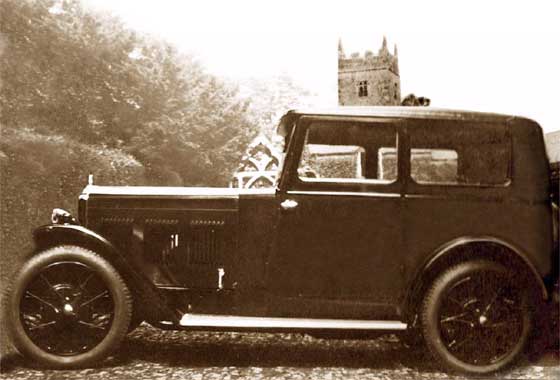
A
1931 Wolseley Hornet saloon style convertible
The Wolseley Hornet was a
lightweight saloon car produced by the Wolseley Motor Company from 1930 to
1935.
It had a six cylinder (1271cc) engine with a single overhead cam, and hydraulic
brakes. The engine was modified in 1932 to make it shorter and it was moved
forwards on the chassis. In 1935 the engine size was increased to 1378 cc.
Wolseley supplied the firsts cars as either an enclosed saloon with steel
or fabric body or open two seater. From 1931 it was available without the
saloon body, and was used as the basis for a number of sporting specials for
which the customer could choose a styling from a range of coachbuilders. In
1932 Wolsley added two and four seat coupés to the range. For its final year of
production the range was rationalised to a standard saloon and coupé.
A three speed gearbox was fitted to the earliest cars but this was upgraded
to a four speed in 1932 and fitted with synchromesh from 1933. A freewheel mechanism
could be ordered in 1934.The engine was also used in a range of MG cars.
If you
run a Theosophy Group, please feel free
to use
any of the material on this site
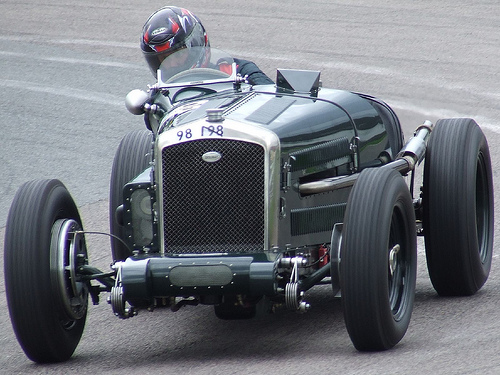
1930s
Wolseley Hornet racing car circuiting the track in modern times
The Most Basic Theosophy
Website in the Universe
A quick overview of Theosophy
and the Theosophical Society
If you run a Theosophy Group you
can use this as an introductory handout.
Theosophy Cardiff’s Instant Guide
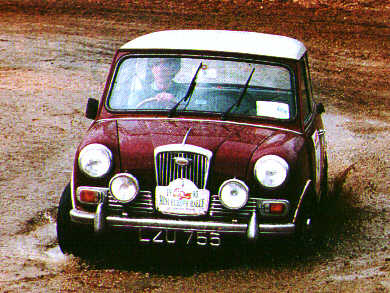
Wolseley
Hornet on a rally circa 1963
Theosophical Movement in Wales
as it separates into independent
groups that run do their own show
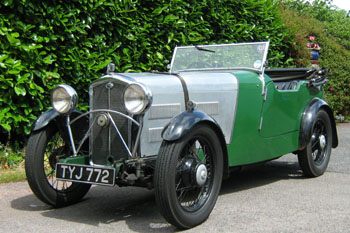
Early
1930s Wolseley Hornet customized roadster design
Basic
front mudguards not extending to runner boards.
Only
the driver gets a windscreen wiper
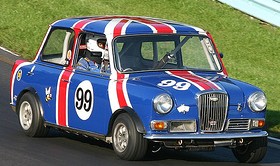
Patriotic
Wolseley Hornet on the race track in 1965
One liners and quick explanations
H P
Blavatsky is usually the only
Theosophist
that most people have ever
heard
of. Let’s put that right
The Voice of the Silence Website
An
Independent Theosophical Republic
Links
to Free Online Theosophy
Study
Resources; Courses, Writings,
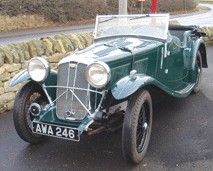
Early
1930s Customized Wolseley Hornet with integrated front mudguards
and
runner boards. Two windscreen wipers on this one.
The main criteria for the inclusion of
links on this site is that they have some
relationship (however tenuous) to Theosophy
and are lightweight, amusing or entertaining.
Topics include Quantum Theory and Socks,
Dick Dastardly and Legendary Blues Singers.

Four
views of the car in the picture above
A selection of articles on Reincarnation
Provided in response to the large
number of enquiries we receive at
Cardiff Theosophical Society on this subject
The Voice of the Silence Website
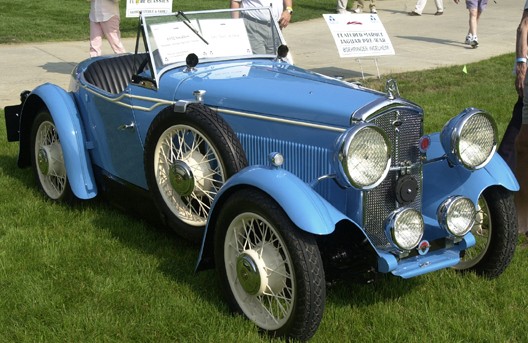
Swallow Wolseley Hornet 1932
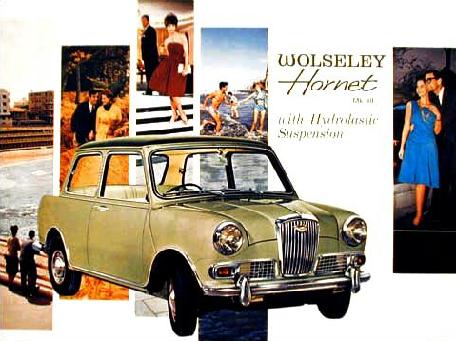
A
leaflet promoting the new hydrolastic suspension introduced in the mid sixties.
This
became standard on many BMC models including the Mini, 1100, 1300
&
1800 models. Suspension was maintained by means of a sealed fluid system
which
was claimed to be very comfortable but appeared to make some people
seasick
in the larger cars. As the cars got older, the suspension might burst
causing
the car’s suspension to collapse on one side meaning a difficult
drive
home or to a garage.
This is for
everyone, you don’t have to live
in Wales to
make good use of this Website

1930s
No
Aardvarks were harmed in the
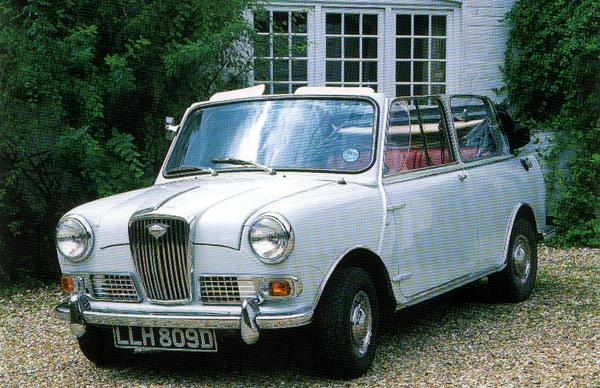
A 1966 Wolseley Hornet
convertible by Crayford Engineering
Convertible 1960s Hornets
were not standard and were very rare as
were all convertibles in the
Mini range.
Crayford did a run of 57
Hornet convertibles for Heinz to be given
as prizes in a competition
Within the British Isles, The Adyar Theosophical Society
has Groups in;
Bangor*Basingstoke*Billericay*Birmingham*Blackburn*Bolton*Bournemouth
Bradford*Bristol*Camberley*Cardiff*Chester*Conwy*Coventry*Dundee*Edinburgh
Folkstone*Glasgow*Grimsby*Inverness*Isle of Man*Lancaster*Leeds*Leicester
Letchworth*London*Manchester*Merseyside*Middlesborough*Newcastle upon
Tyne
North Devon*Northampton*Northern Ireland*Norwich*Nottingham
Perth*Republic of Ireland*Sidmouth*Southport*Sussex*Swansea*Torbay
Tunbridge Wells*Wallasey*Warrington*Wembley*Winchester*Worthing
The Spiritual Home of Urban Theosophy
The Earth Base for Evolutionary Theosophy
A
B
C
D
EFG
H
IJ
KL
M
N
OP
QR
S
T
UV
WXYZ
Complete Theosophical Glossary in Plain Text Format
1.22MB
__________________
& of course
you don’t need to live in Wales
to take advantage of this guide
_____________________
Camberley, Surrey, England GU15 - 2LF
Tekels Park to be Sold to a Developer
Concerns are raised about the fate of the wildlife as
The Spiritual Retreat, Tekels Park in Camberley,
Surrey, England is to be sold to a developer
Tekels Park is a 50 acre woodland park, purchased
for the Adyar
Theosophical Society in England in 1929.
In addition to concern about the park, many are
worried about
the future of the Tekels Park Deer
as they are not a protected species.
Many feel that the sale of a
sanctuary
for wildlife to a developer can only
mean
disaster for the park’s animals
In addition to concern about the
park,
many are worried about the future
of the Tekels Park Deer as they
Confusion as the Theoversity moves out of
Tekels Park to Southampton, Glastonbury &
Chorley in Lancashire while the leadership claim
that the Theosophical Society will carry on
using
Tekels Park despite its sale to a developer
Anyone planning a “Spiritual” stay at
the
Tekels Park Guest House should be
aware of the sale.
Theosophy talks of a compassionate
attitude
to animals and the sale of the Tekels
Park
sanctuary for wildlife to a developer
has
Future
of Tekels Park Badgers in Doubt
Party On!
Tekels Park Theosophy NOT
St Francis Church at Tekels Park
Tekels Park & the Loch Ness Monster
A Satirical view of
the sale of Tekels Park
in Camberley,
Surrey to a developer
The Toff’s Guide to the Sale of Tekels Park
What the men in top
hats have to
say about the sale
of Tekels Park
____________________
The Theosophy Cardiff
Guide to
Pendle Hill, Lancashire, England.
Quick
Explanations with Links to More Detailed Info
What is Theosophy ? Theosophy Defined (More Detail)
Three Fundamental Propositions Key Concepts of Theosophy
Cosmogenesis
Anthropogenesis
Root Races
Karma
Ascended Masters After Death States Reincarnation
The Seven Principles of Man Helena Petrovna Blavatsky
Colonel Henry Steel Olcott William Quan Judge
The Start of the Theosophical Society
History of the Theosophical Society
Theosophical Society Presidents
History of the Theosophical Society in Wales
The Three Objectives of the Theosophical Society
Explanation of the Theosophical Society Emblem
Glossaries of Theosophical Terms
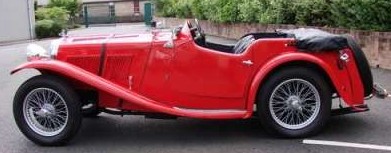
Another
good example of a 1930s Wolseley Hornet
An Outstanding Introduction to Theosophy
By a student of Katherine Tingley
Elementary Theosophy Who is the Man? Body and Soul
Body, Soul and Spirit Reincarnation Karma
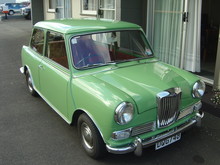
1960s
Riley Elf
Outwardly
the same as the Wolseley Hornet except for the badge & grill
A
bit more expensive
What Theosophy Is From the Absolute to Man
The Formation of a Solar System The Evolution of Life
The Constitution of Man After Death Reincarnation
The Purpose of Life The Planetary Chains
The Result of Theosophical Study
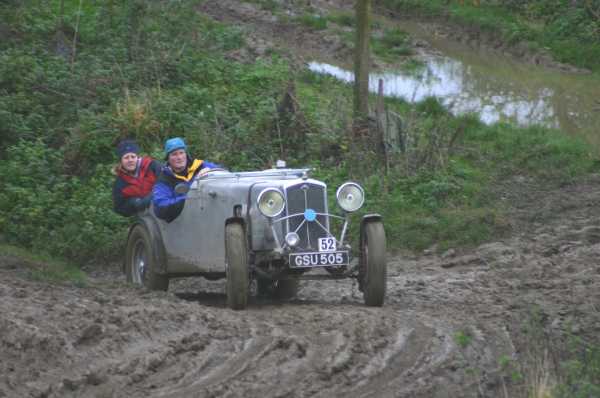
1930’s
Wolseley Hornet on a hill climb trial
An Outline of Theosophy
Charles Webster Leadbeater
Theosophy - What it is How is it Known? The Method of Observation
General Principles The Three Great Truths The Deity
Advantage Gained from this
Knowledge The Divine Scheme
The Constitution of Man The True Man Reincarnation
The Wider Outlook Death Man’s Past and Future
Cause and Effect What Theosophy does for us

Side
and rear view of a 1960s Wolseley Hornet
Try these if you are looking
for a local
Theosophy Group or Centre
UK Listing of Theosophical Groups
Please tell us about your UK Theosophy Group
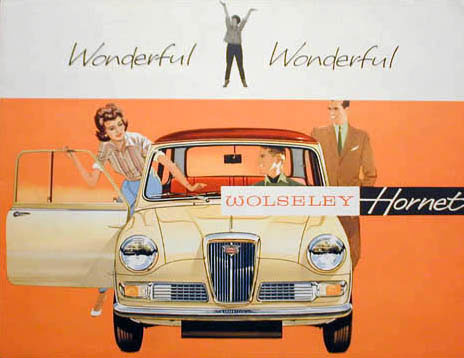
1960s
Wolseley Hornet promotional leaflet
___________________
into categories and
presented according to relevance of website.
Web Directory
- Add Link - Submit Article - Online Store - Forum
______________________
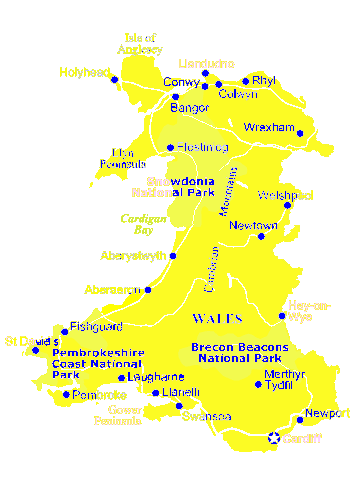
General pages about Wales, Welsh History
and The History of Theosophy in Wales
Wales is a
Principality within the United Kingdom and has an eastern
border with
England. The land area is just over 8,000 square miles.
Snowdon in North
Wales is the highest mountain at 3,650 feet.
The coastline is almost
750 miles long. The population of Wales
as at the 2001 census is 2,946,200.
________________
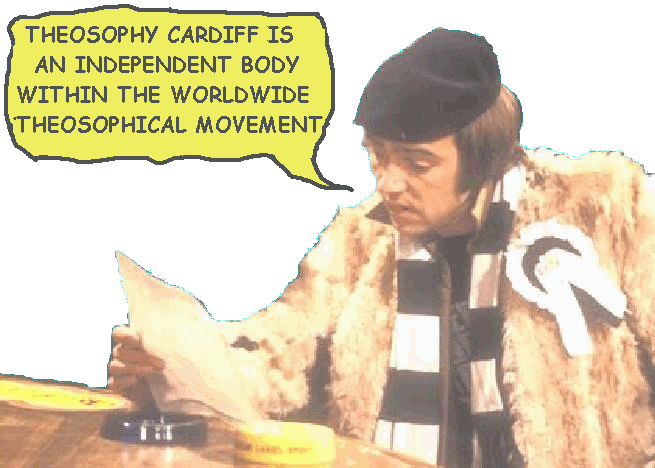
Bangor Conwy & Swansea Lodges are
members
of the Welsh Regional Association
(Formed 1993).
Theosophy Cardiff separated from the
Welsh Regional
Association in March 2008 and became an independent
body within the Theosophical Movement in March 2010
High
Drama & Worldwide Confusion
as
Theosophy Cardiff Separates from the
Welsh
Regional Association (formed 1993)
Theosophy Cardiff cancels its Affiliation
to the Adyar Based Theosophical Society
Cardiff, Wales, UK, CF24 – 1DL
